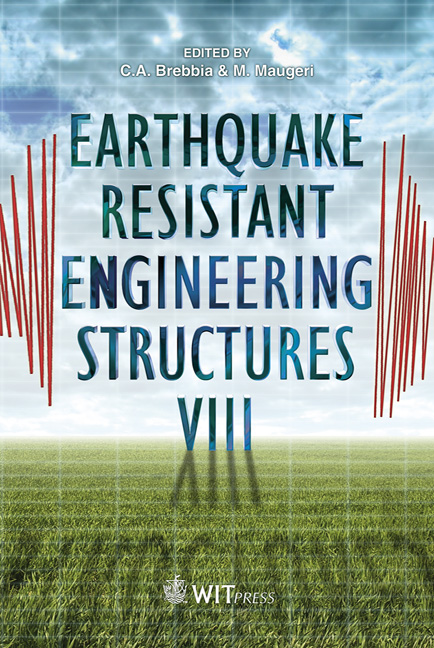Role Of Hysteretic Damping In The Earthquake Response Of Ground
Price
Free (open access)
Transaction
Volume
120
Pages
11
Page Range
123 - 134
Published
2011
Size
472 kb
Paper DOI
10.2495/ERES110111
Copyright
WIT Press
Author(s)
N. Yoshida
Abstract
Parametric studies are carried out to investigate the role of the hysteretic damping in earthquake response analysis. The maximum acceleration is found to have an upper bound under very large earthquakes and hysteretic damping does not affect it. On the other hand, response acceleration becomes large in the shorter period as the hysteretic damping increases. It comes because stiffness after the unloading becomes large so as to increase the hysteretic damping ratio, which is a quite different feature that viscous damping has although they are usually understood to have the same mechanical nature. Keywords: earthquake, hysteretic damping, shear strength, upper bound acceleration. 1 Introduction Nonlinear behaviour of soils for the earthquake response analysis of ground is usually defined by strain dependent shear modulus and damping ratio. As such, damping ratio is supposed to be an important mechanical property. It has been supposed to supress the earthquake response; earthquake motion becomes smaller as the damping ratio increases. On the other hand, the authors showed a different point of view [1]. Maximum acceleration does not exceed the upper bound acceleration under the large ground motion. It means that damping ratio does not work so as to supress the ground acceleration at the ground surface. Instead, another aspect is found; response at high frequency is excited as the damping ratio. In the previous study, however, only one example was shown. A series of parametric study is carried out in this paper in order to see what happens when the hysteretic damping changes.
Keywords
earthquake, hysteretic damping, shear strength, upper bound acceleration





